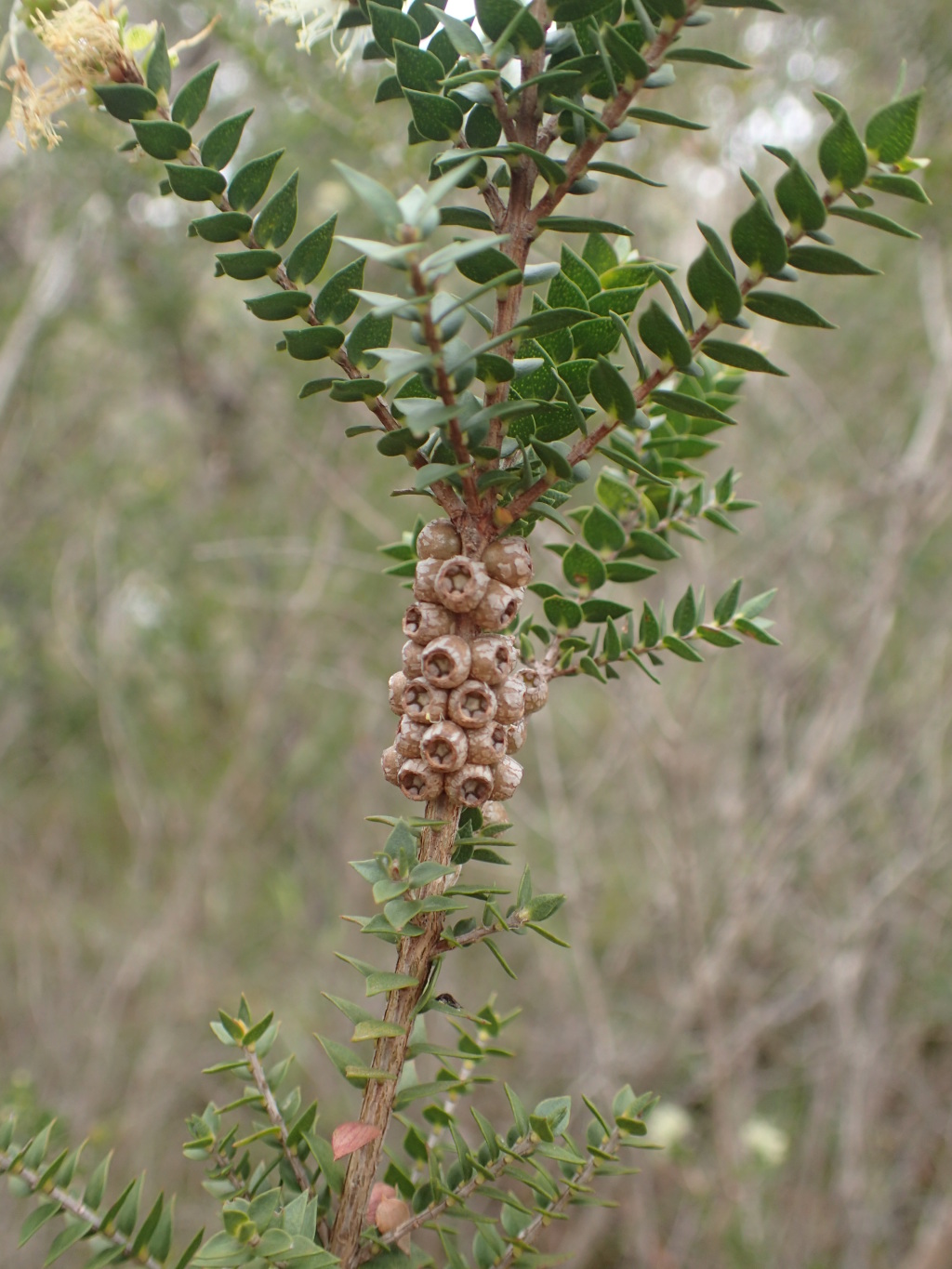Melaleuca squarrosa
Donn. ex Sm. Scented PaperbarkMostly shrubby but occasionally a tree to 10 m or so high, glabrous except for the young shoots and axis; bark papery or corky but rough on old stems. Leaves decussate, ovate, 5–12 mm long, 3–7 mm wide, acute, cordate or truncate at the base, 5–7-veined, gland-dotted on lower surface; petiole c. 1 mm long. Inflorescence a terminal cylindric spike, to c. 5 cm long, 1.5–2.2 cm wide; axis hairy, growing on into a leafy shoot. Flowers in triad pairs subtended by rounded leaf-like bracts c. 3–5 mm long, fragrant; stamens 7–12 per bundle, lemon-yellow to creamy-white, claw c. 1 mm long, free part of filaments 5–7 mm long. Capsules wrinkled, round to elongate, 3–4 mm long. Flowers mostly late spring–summer.
Wim, GleP, Brid, VVP, GipP, OtP, WaP, CVU, GGr, DunT, EGL, EGU, WPro, HSF, HNF, OtR, Strz, HFE, VAlp. Also SA, NSW, Tas. Mostly in wet and peaty soils, fringing swamps, streambanks and sometimes shaded gullies south of the Great Dividing Range.
Hybrids with Melaleuca squamea, having relatively small, hardly decussate leaves and pinkish to pale mauve flowers in elongated clusters, have been recorded where the parent species grow together (e.g. Kentbruck Heath in far southwestern Victoria).
Spencer, R.D. (1996). Melaleuca. In: Walsh, N.G.; Entwisle, T.J., Flora of Victoria Vol. 3, Dicotyledons Winteraceae to Myrtaceae, pp. 1027–1034. Inkata Press, Melbourne.
 Spinning
Spinning

